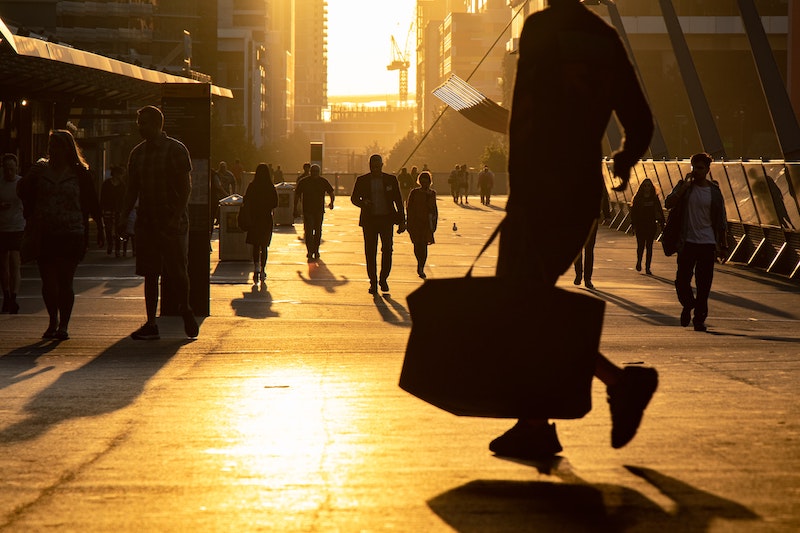Josh Frydenberg’s embarrassing take-down by the Senate this week over a bizarre plot to over-regulate proxy advisers has left this government with no economic agenda, indeed a record of failure on the economy. Alan Austin investigates the claim of “massive” jobs growth and finds it, like many of this government’s claims, does not stack up.
Suppose a treasurer in a Westminster democracy somewhere came to the job determined to cut the jobless rate from 6.2% to 4.2% – by whatever means. If he achieved this, his place in history – and his party’s future in government – would be assured.
One strategy would be to encourage innovation, boost productivity, fix tax avoidance so that corporations paid a fair share and apply some of that revenue to infrastructure.
If he boosted wages and gave pensioners extra spending money, the immediate benefits for retailers would flow through to wholesalers, manufacturers, primary producers, importers and service providers. Then beyond.
But there is an alternative pathway. If cost is no object, all he has to do is take two percent of the unemployed workforce and give them paid positions in government offices. With a desk and a salary – part-time or full-time doesn’t matter – they are counted as employed, even if doing no actual work.
Australia’s actual modern history
Australia’s story since Scott Morrison became Treasurer in September 2015 is of an economy steadily deteriorating across the board, despite the booming export sector and record corporate profits.
A retail recession hit in 2017-18, with the worst collapse in sales on record. The economy overall entered a per capita recession in 2018 and a full-blown recession in 2020. Yes, the pandemic is a mitigating factor, a huge thump to economic performance. Nevertheless, Australia has lagged the world on a range of important metrics.
Over the last five years, Australia’s economy has recorded more than fifty outcomes which are the worst since records began, or the lowest-ranked in the developed world, or the worst collapse in global rankings ever. These include the deepest post-war budget deficits, the explosion of government debt, record high income tax collections from individual taxpayers relative to GDP, all-time low social housing investment, the worst manufacturing collapse and lowest infrastructure investment to GDP on record. Most of these were not caused by the pandemic.
The paradox of buoyant jobs
If this Government has the worst economic results on record – as commentators are increasingly observing – then how come the jobless rate is at a fifty-year low? Surely the Government must be succeeding.
One element of this puzzle is explained in file 6291 Detailed Labour Force, table 26a, published by the Australian Bureau of Statistics (ABS). This records workers employed by the public sector, starting in 2014.
There was a dramatic increase in calendar 2018, the year Morrison became PM and Frydenberg Treasurer. Public service jobs soared from 1,465 thousand in November 2014 to 1,948 thousand in November 2019. It has stayed high since, with 1,954 thousand in government jobs last November. Public servants as a percentage of the workforce are shown in the graph, below.
This despite a surge in outsourcing and record payments for consultants. The cost of government has never been higher. Those extra 489 thousand government employees are 3.54% of the workforce. If Australia had the same ratio of public servants to total workers today as in 2014, and if the extra public servants were counted as jobless, the current unemployment rate would be 2.25% higher, that is, 6.41%.
Productivity tells the tale
So are those extra “workers” doing anything productive? We get a clue from ABS file 5206, table 1, which shows productivity for the economy overall. That is, gross domestic product generated per hour worked.
Productivity increased from 89.8 index points in 2011 to an all-time high 98.5 in the 2014. Up 8.7 points in 15 quarters. Impressive.
Then it stalled. Four and a bit years later, in the first quarter of 2019, productivity had only reached 99.5 index points. Up one point in 17 quarters.
(Productivity jumped in June 2020 to 103.3 points as a result of drastically reduced hours worked, but has been below that in all five quarters since.) So there is no evidence here that the economy benefited from the surge in “workers” on the public payroll.
Is there other evidence? Where?
The truth of the situation
Treasurer Josh Frydenberg told ABC News Breakfast on Monday,
“What we are focusing on … is this massive movement of people into new jobs and, as a result, higher wages. What I’m focusing on is an unemployment rate potentially with a 3 in front of it for the first time since 1974. And 1.7 million more Australians in work today …”
Several issues here. First, jobs “created” since Frydenberg became Treasurer are just 621,400. That’s a rate of 186,400 per year, far below the 20-year average of 208,900. That’s not a “massive movement of people”.
Second, the ABS jobless rate in February 2008 had a 3 in front of it, at 3.98%. For 13 months of the first two years of the last Labor Government, the jobless rate was below 4.5%. Frydenberg has only achieved that once – in forty months as Treasurer.
Third, there are no signs of significant wage rises. Morrison and Frydenberg achieved the lowest wage rises on record twice – in consecutive financial years to June 2020 and June 2021. Wages growth has declined in six of the eight Coalition years.
And one final Frydenberg fun fact. Even if we accept the headline ABS jobless figure of 4.16%, this still ranks a lowly 13th in the OECD, much lower than in the past. The USA, the Netherlands, New Zealand, Norway, Mexico and South Korea all have jobless rates below 4%. Denmark, Switzerland and Japan have them below 3%.
These are high-employment times globally. Australia is lagging the world leaders here as in almost all other economic outcomes.
Alan Austin is a freelance journalist with interests in news media, religious affairs and economic and social issues.

